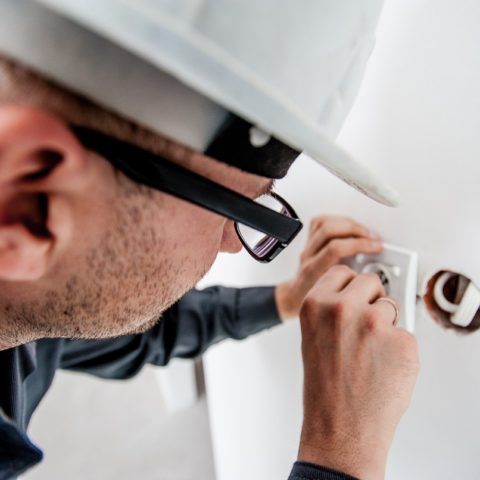Surge protectors safeguard electronics by absorbing excess voltage, typically offering up to 4,000 Joules of energy protection and features like USB ports for convenient charging.
Types of Surge Protectors
Point-of-use surge protectors
As the name suggests, these devices are designed to protect specific electronic devices, usually used in homes and offices. The joule rating indicates the total amount of energy that can be sustained before failure occurs in all electronic devices. For example, when we talk about a 1000 joule surge protector, this specific rating is for a PC that is just above the motherboard, and you only need to protect against phase-to-phase power fluctuations and some minor surge events.
Whole-house surge protectors
Installed at the distribution board, they protect all the electronic devices in your home by shutting off external surges at the point of entry. This is essential for places where there is a risk of lightning strikes or power supply problems occur frequently. According to information provided by insurance agencies, homes using these appliances have a lower number of claims in terms of electrical accidents.
Network surge protectors
Designed to protect network trunks such as Ethernet, coaxial cables, and telephone lines. As we all know, network surge protectors are an important addition to prevent surges from reaching network devices, helping to maintain data integrity and prevent data loss.
Power strip surge protectors
These devices offer surge protection and power strips, giving you more outlets. This helps them fit well in office spaces where a large number of devices need to be protected and desk sizes are limited. From a design aspect, the design usually includes things like indicator lights for surge protection status and ground indicators.
Voltage Switching Surge Protectors
We have voltage switching surge protectors These surge protectors are a special type that sense incoming voltage and instantly shut off power to the connected instrument. They are particularly useful where the power supply is irregular. In high speed scientific applications, they can be switched on and reset without any human intervention, which makes them very important for high speed critical applications where continuous power is required.

Core Technologies Used
Metal Oxide Varistors
MOVs are the core component of almost all surge protectors. Shutdown to preserve the life of electronic devices Fuses protect electronic devices by draining excessive voltage away from delicate devices MOVs can clamp voltage on the order of a few nanoseconds (about 20-40 nanoseconds), effectively protecting connected devices from damage. They have an energy budget — they can absorb a specific number of joules before they degrade.
Gas Discharge Tubes
Often used in conjunction with MOVs, GDTs are important when dealing with extremely high voltage transients, such as lightning strikes. They activate by ionizing the gas in a sealed tube, and an electrical spark enters the protected circuit to divert the surge. GDTs are triggered at voltages in excess of 300 volts, making them best suited for outdoor and industrial applications, where high voltage protection is extremely necessary.
Transient Voltage Suppression Diodes
TVS diodes provide more precise voltage clamping, clamping orders of magnitude faster than MOVs, with response times in the picosecond range. They are widely used in low-voltage applications, including data lines and telecommunications equipment. The key result is that TVS diodes are the only devices known for long-term reliability and ruggedness, withstanding thousands of events simultaneously without degradation.
Silicon Avalanche Diodes
SADs are similar to TVS diodes, but are designed to handle high-energy transients. Using a silicon package that breaks down under heavy loads, they effectively act as a path for current to pass through and keep the rest of the circuit safe. This is most commonly seen in environments where electronic equipment is subjected to repeated corrosive surges.
Hybrid Surge Protectors
Combining multiple technologies such as MOVs, GDTs, and diodes to provide comprehensive protection. Hybrid surge protectors are specifically manufactured to ensure the fastest and highest energy transfer capabilities, making them suitable for residential and industrial applications where different types of electrical disturbances are bound to occur.
Common Applications
Home Electronic Device Protection
Every home has valuable electronic devices: TVs, computers, home theaters, and more—all of which are at risk from devastating power surges. Surge protectors protect these devices from damage caused by common electrical disturbances in the home. More than 30% of homes in the United States have experienced surge-related damage, leading to the growing use of surge protection devices.
Office Equipment Security
Offices contain important data as well as expensive equipment that needs protection from other outlets handling surges. You’ll find surge protectors in most desktop computers, servers, printers, and telecommunications equipment; even large devices like televisions with plasma panels now include built-in surge protection circuitry. It helps maintain operational continuity and data integrity in corporate environments, where downtime can result in significant financial losses.
Industrial Systems
Surge protection is absolutely necessary in industrial applications, as it plays a vital role in protecting heavy machinery and production equipment from high-energy transients. This includes devices that help prevent operational interruptions and equipment failures, which are not only expensive but can also result in significant downtime.
Telecommunications Networks
Telecommunications network surge protectors are a critical component in keeping telecommunications networks up and running and avoiding service interruptions. Telecommunications equipment is susceptible to power surges, and in the worst case scenario, even a small surge can damage the equipment to the point where data may not be recoverable and service will be interrupted. Networking through surge protectors in such networks ensures that the most important uninterrupted communications are delivered safely within the enterprise during severe weather conditions.
Healthcare Facilities
Hospitals and healthcare facilities use surge protectors to protect their critical medical equipment, such as MRI machines, patient monitoring systems, and such surgical equipment. Since these devices are used in critical applications, this level of availability is literally a matter of life and death, so surge protection ranks high among the priorities in the healthcare sector.
Renewable Energy Systems
Renewable Energy is on the rise with the advent of solar panels and wind turbines, but surge protection is essential to prevent overvoltage. These systems are often installed outdoors, making them highly susceptible to severe weather, lightning strikes, and other forms of electrical interference. Good surge protection is essential to extend the life and performance of these green technologies.

Safety Certifications
UL Certification
The UL (Underwriters Laboratories) certification is one of the most well-known regulatory labels in the field of electrical safety. UL-certified surge protectors have been tested and found to comply with certain safety standards. Even less commonly used standards are nothing to worry about; for example, UL 1449 is a UL standard for surge protection devices that limits specific energy measurements to suppressors that do not pose a fire or shock hazard.
CE Marking
A surge protector with the CE mark ensures that the product complies with European standards for safety, health, and environmental protection. This certification is required for products sold in the European Economic Area (EEA) and is often used to assess whether a product meets the operating standards and safety requirements set forth in EU directives.
IEEE Compliance
Compliance with IEEE (Institute of Electrical and Electronics Engineers) standards indicates that the surge protector meets specific parameters related to overall performance and reliability. IEEE C62. 41, for example, describes the performance of surge protectors in low-voltage AC power circuits, so surge protectors are an important safeguard for maintaining device functionality during input voltage surges common in residential and commercial environments.
RoHS Compliance
The Restriction of Hazardous Substances Directive (RoHS) restricts the use of specific hazardous substances in electrical and electronic products. A RoHS compliant surge protector (RoHS stands for "Restriction of Hazardous Substances") ensures that the product does not contain hazardous substances such as lead, cadmium and mercury, which are present in many electronic components during the manufacturing process but are harmful to the environment and our health.
ETL Listed Mark
The ETL Listed Mark indicates that the surge protector has passed the performance and safety standards established by Intertek for North American safety standards. The ETL Mark tells consumers that the product is safe, reliable and meets current standards. This is an important milestone, especially for goods distributed or sold in the US and Canadian markets.
Latest Innovations
Smart Surge Protectors
The addition of smart technology to surge protectors is a big step forward for the industry. Smart energy monitors and smart plugs connect to Wi-Fi and work with smartphone apps to monitor and manage energy usage even when users are not at home.
Eco-Friendly Surge Protection
As more and more people start to think about being friendlier to the environment, some manufacturers are starting to produce eco-LEDs. In light of this, it is undoubtedly a good thing that these devices come with power saving modes that can drastically reduce the carbon footprint of said devices simply by using less power during periods of inactivity. This allows premium models to reduce standby energy consumption by 85%, resulting in significant energy savings.
USB-C and High-Speed Charging Ports
In contrast, newer versions come with high-speed fast-charging USB-C ports. The rapid loading of smartphones, tablets, and laptops echoes the times we live in, taking advantage of the last generation of technology users. The fast, 3-amp high-speed charging option provides fast and efficient charging times.
Enhanced Durability and Lifespan
Modern surge protectors are not only designed to handle higher energy capacities, but also last longer. Manufacturers have improved the durability of MOV components, which are essential for absorbing and dissipating energy during surges. Recent developments have allowed MOVs to handle thousands of surge events over their lifetime without degradation, greatly increasing the life of surge protectors.
Modular Surge Protection Systems
Modular surge protection systems have become increasingly popular for commercial and industrial applications. These systems allow components to be replaced or upgraded without having to replace the entire system, which can be expensive and inefficient. This modular approach not only makes maintenance easier, but it also ensures that the protection system can quickly adapt to changes in equipment or power demands.
